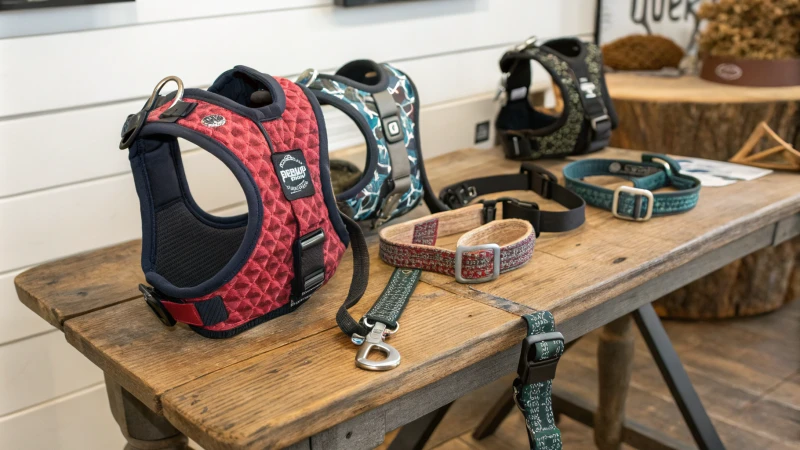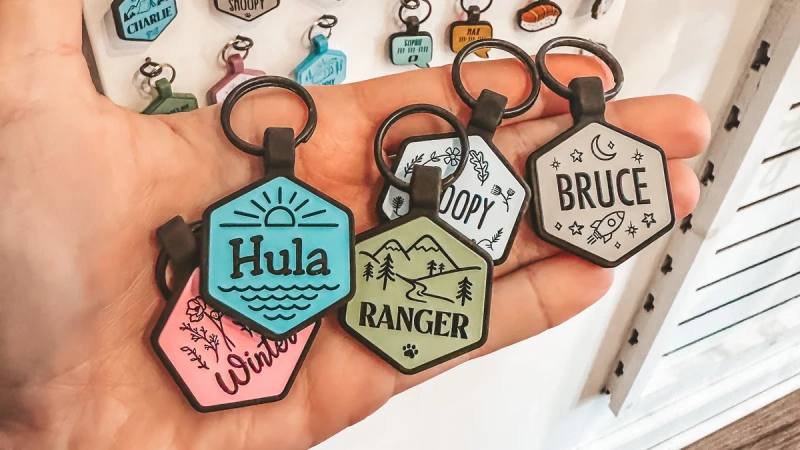
Interested in taking your cat outside using a harness? You are definitely not the only one! I often think about it too when I see my cat looking sadly out the window.
Using a harness to bring your cat outside is often safe. It is enjoyable with the right steps. Knowing the risks is essential. Choosing the right equipment matters. Training your cat is crucial. Patience helps. Care is important. You create memorable adventures for you and your cat. Adventures become special for both of you.
I took this journey and it is a rewarding experience if you take your time. Understanding both the joys and risks is really important. You and your furry friend should know what to expect. Together, you both will probably enjoy the magic of the outdoors.
Cats can safely enjoy outdoor time on a harness.True
When properly trained and equipped, cats can have safe outdoor experiences on a harness.
All cats will adapt well to wearing a harness.False
Not all cats are comfortable with harnesses; some may resist or feel stressed.
What Are the Potential Risks of Taking a Cat Outside on a Harness?
I remember the first time I took my cat outside with a harness. This idea seemed exciting – an adventure waiting to begin! However, risks appeared quickly. Let’s explore these risks together. We need to keep your furry friend safe.
Taking a cat outside on a harness involves several risks. These risks include the chance of escape, exposure to environmental dangers and unpredictable behaviors. A very good harness keeps the cat safe. Proper preparation is essential. Gradually train your cat for outdoor adventures.

Understanding Escape Risks
Taking your cat outside on a harness poses a significant risk of escape. Cats are naturally curious creatures and may panic if they encounter unfamiliar environments or loud noises. When startled, they can easily slip out of a harness, leading to potential danger.
To minimize this risk, it’s crucial to choose a high-quality harness specifically designed for cats. Look for harnesses that have:
| Feature | Importance |
|---|---|
| Secure Buckles | Prevent accidental release during walks. |
| Adjustable Straps | Ensure a snug fit to prevent escape. |
| Escape-Proof Design | Additional security features to keep the cat safe. |
Environmental Hazards
Outdoor environments are filled with potential hazards. From busy roads to aggressive animals, the risks can be numerous.
Here are some common environmental hazards to be aware of:
- Traffic: Cars can pose a serious threat to wandering cats.
- Other Animals: Unfamiliar dogs or wildlife can trigger a defensive reaction in cats.
- Parasites: Fleas, ticks, and other parasites are more prevalent outdoors.
For further safety, consider using flea and tick prevention methods before heading out. Learn more about parasite prevention1.
Behavioral Reactions
A cat’s behavior can be unpredictable outdoors. Even the calmest cat may react aggressively if they feel threatened. This can lead to dangerous situations for both the cat and the owner.
Here are some behavioral reactions you might encounter:
- Hiding: Cats may seek shelter under bushes or cars.
- Aggression: A scared cat may hiss or scratch if approached by another animal.
- Fleeing: The instinct to run can lead them into unsafe areas.
To mitigate these behaviors, ensure your cat is well-trained and comfortable with the harness before venturing outside. Check training tips here2.
Choosing the Right Harness
Selecting the right harness is essential for ensuring your cat’s safety while outdoors. Here are some tips:
- Type of Harness: A vest-style harness is often recommended as it distributes pressure evenly and minimizes escape chances.
- Fit and Comfort: Make sure the harness fits snugly but allows for movement; two fingers should fit between the harness and the cat’s body.
- Material Selection: Opt for breathable materials to keep your cat comfortable during walks.
By taking these considerations into account, you can enhance your cat’s outdoor experience while reducing risks.
Preparing for Outdoor Walks
Before embarking on an outdoor adventure with your cat, take the following precautions:
- ID Tags: Ensure your cat wears a breakaway collar with ID tags and consider microchipping for added security.
- Health Check: Consult with your veterinarian to ensure your cat is up-to-date on vaccinations and parasite prevention.
- Safe Locations: Start in quiet areas free from heavy traffic or aggressive animals to help your cat acclimate.
Following these steps will help create a safer environment for your feline friend as they explore the great outdoors. Find safe walking locations3.
In conclusion, while taking a cat outside on a harness can be an enriching experience, understanding the potential risks involved is vital. By preparing adequately and being aware of the surroundings, you can ensure a safer experience for both you and your pet.
Cats can easily escape from harnesses if startled.True
When startled, cats may panic and slip out of a poorly fitted harness, leading to potential danger.
Outdoor environments pose multiple hazards for cats.True
Cats are at risk from traffic, aggressive animals, and parasites when outdoors, making safety precautions essential.
How Can I Train My Cat to Wear a Harness Effectively?
Have you ever dreamed about bringing your furry friend on fun outdoor trips? I have! Teaching my cat to wear a harness was a journey. It had many ups and downs. The rewards were really worth it.
To train your cat to wear a harness, start slowly. Introduce the harness using treats. Choose the right harness for comfort and fit. Practice leash training inside your home. Later, try it outside. These steps help keep your cat safe. They also improve outdoor experiences.

Understanding Your Cat’s Behavior
Before training your cat to wear a harness, it’s essential to understand their natural instincts. Cats are generally more independent than dogs and may feel apprehensive about new experiences.
Start by observing how your cat reacts to different environments and stimuli.
Familiarizing them with the harness gradually will help reduce anxiety. For example, let them sniff the harness and explore it without any pressure. This will create a positive association.
Choosing the Right Harness
Selecting the proper harness is critical for your cat’s comfort and safety. Here’s a breakdown of factors to consider:
| Feature | Recommendation |
|---|---|
| Type | Cat-specific harness (not a collar) |
| Fit | Snug but not tight; two fingers should fit between the harness and your cat’s body |
| Material | Sturdy yet flexible for comfort |
A vest-style harness is often best for escape-prone cats. For detailed options, consider checking out harness types4.
Training Steps
Training your cat to wear a harness can be broken down into several manageable steps:
-
Familiarization: Allow your cat to investigate the harness at their own pace. Use treats to encourage interaction.
- Tip: Place treats inside or near the harness to create a positive experience.
-
Gradual Introduction: Start by draping the harness over their back without fastening it.
- Tip: Gradually progress to fastening it for short periods while rewarding with treats.
-
Leash Training Indoors: Once your cat is comfortable with the harness, attach the leash and let them drag it around indoors while supervised.
- Tip: This helps them get used to the sensation of being leashed without any pressure.
For more in-depth training tips, see training methods5.
Preparing for Outdoor Adventures
Before taking your cat outside, make sure to:
- Use ID Tags: Ensure your cat has a breakaway collar with ID tags and consider microchipping.
- Health Check: Consult with your veterinarian about vaccinations and parasite prevention before exposure to outdoor environments.
- Safe Environment: Choose quiet areas free from heavy traffic for initial walks.
Here’s a checklist:
| Preparation Step | Details |
|---|---|
| ID Tags | Breakaway collar with ID tags |
| Health Check | Vaccinations and parasite prevention |
| Environment Safety | Quiet area for initial walks |
Make sure to look into outdoor safety tips6 for a comprehensive guide.
Walking Techniques
When you’re ready for outdoor walks, remember:
- Use a Short Leash: A short leash provides better control and prevents sudden escapes.
- Stay Calm and Observant: Monitor your surroundings and be prepared for unexpected movements from your cat.
- Avoid Retractable Leashes: These can be risky as they may not lock properly when needed.
By following these guidelines and being patient, you can effectively train your cat to wear a harness. This will not only enhance their outdoor experiences but also provide them with enrichment through new sights and smells.
Cats are more independent than dogs during training.True
Cats exhibit more independent behavior, making them less likely to follow commands compared to dogs, which can impact training methods.
Using a collar is better than a harness for cats.False
Harnesses provide better control and comfort for outdoor activities, whereas collars can be unsafe for walking cats outside.
What Type of Harness is Best for My Cat’s Safety?
Selecting a harness for our cat companions is important for their safety and comfort during outdoor trips. A suitable harness keeps them secure and happy. Here are some thoughts that guided me in picking the perfect harness for my adventurous cat.
Choose a vest-style or escape-proof harness for your cat’s safety. Find one that fits snugly but isn’t too tight. Important safety features include breakaway mechanisms and reflective strips. These features help keep your cat very secure during outdoor trips. Your feline friend stays really safe with the right harness.

As a proud cat parent, I learned that choosing the right harness is very important. It’s not just about style. Our furry friends need to feel safe and comfortable when they explore. A few weeks ago, I took my cat, Whiskers, for his first walk with a harness. It changed everything! He felt nervous at first. However, with the right harness, he soon relaxed and began enjoying the sights and sounds outside.
Understanding Different Types of Cat Harnesses
When considering the best harness for your cat’s safety, it’s important to understand the various types available. Each type has its pros and cons based on your cat’s behavior and size.
- Vest-Style Harness:
- Description: This harness looks like a vest covering more of your cat’s body.
- Pros: It spreads pressure evenly, preventing escapes. This is ideal for nervous cats like Whiskers who may run at sudden noises.
- Cons: Putting it on and off can be a bit challenging, especially if your cat is energetic.
- H-Style Harness:
- Description: Featuring two straps, it forms an ‘H’ shape on your cat’s back.
- Pros: Easy to use – just slip it on and off! Lightweight and perfect for cats used to walking on a leash.
- Cons: If your cat is like a little Houdini, this might not be secure enough.
- Escape-Proof Harness:
- Description: Composed of extra straps and buckles to keep your cat safely in place.
- Pros: Perfect for escape artists who manage to get out of any situation!
- Cons: May cost more and require patience as your cat gets used to it.
For a detailed comparison, check out this harness guide7.
Fit Matters: How to Measure Your Cat for a Harness
| A correct fit is crucial for safety and comfort. Here’s how I measured Whiskers: | Measurement | How to Measure |
|---|---|---|
| Neck Size | Measure around the neck, leaving room for two fingers. | |
| Chest Size | Measure around the widest part of the chest (just behind the front legs). | |
| Body Length | Measure from the base of the neck to the base of the tail. |
Remember to use the size chart from the harness maker after measuring! A snug yet comfortable fit is vital for keeping our adventurous cats safe.
Safety Features to Look For in a Harness
When choosing a harness, I always find these essential safety features important:
- Breakaway Mechanism: Ensures that if your cat gets caught, this will release safely. It’s really important!
- Reflective Strips: Ideal for evening walks. These increase visibility in low light and probably prevent dangers.
- Adjustable Straps: They provide a tailored fit as our furry friends grow or change shape.
These features significantly improve your cat’s safety outdoors. Don’t forget to read reviews about recommended harnesses8.
Training Your Cat with the Harness
Even the best harness fails if cats feel uncomfortable wearing it. Here are tips that worked for me with Whiskers:
- Familiarization: Let your cat discover the harness at their own speed. I used treats to create positive vibes – Whiskers really loved it!
- Short Sessions: Begin with short periods of wearing the harness indoors, gradually increasing the time as your cat gets used to it.
- Leash Introduction: Once comfortable, add the leash while they move indoors under your watchful eye.
Training helps cats adjust and ensures they feel secure during outdoor adventures. For more insights on training, see our training tips9.
Vest-style harnesses are ideal for anxious cats.True
Vest-style harnesses distribute pressure evenly, making them suitable for anxious or escape-prone cats, enhancing their comfort and safety outdoors.
H-style harnesses are the most secure option available.False
H-style harnesses are easy to use but less secure than other types, making them unsuitable for escape-prone cats.
What Are the Safest Environments for Taking My Cat on Outdoor Walks?
Bringing my cat on outdoor adventures is very rewarding. Their safety remains my top concern. Let’s discover the best places to experience those special outdoor moments with my furry friend.
To keep your cat very safe during outdoor walks, select areas with few cars. Use fenced spaces or catios. Watch their comfort levels closely. A secure environment is important. A secure setting is very crucial.

Understanding Safe Environments for Cat Walks
When I took my cat outside for the first time, I quickly saw the importance of choosing safe places. Cats are curious creatures. Their curiosity might lead them into difficult situations. Here are some tips that helped me on this exciting journey:
-
Low-Traffic Areas: Seek out parks or quiet trails where vehicle traffic is minimal. This reduces the risk of accidents. Occasionally, I find hidden spots in parks that feel like they were made for us.
-
Fenced Spaces: Enclosed areas like dog parks or my backyard offer a safe way for my cat to roam. I check that fences are tall and gap-free to prevent escapes.
-
Catios and Enclosures: My favorite buy is a catio, a cozy outdoor space where my cat stays safe while enjoying fresh air. They can experience nature without any worry, plus it fits any place and it’s a great home addition.
Ideal Features of Safe Walking Areas
| While planning our outdoor trips, I look for certain features that really improve safety: | Feature | Description |
|---|---|---|
| Shade | Provides protection from heat and prevents overheating. | |
| Soft Ground Cover | Grass or soft surfaces reduce injury risk if your cat jumps or falls. | |
| Away from Predators | Areas that are not near wildlife habitats lower the chances of confrontations with other animals. | |
| Limited Noise | Quiet places help keep your cat calm and reduce anxiety during walks. |
Monitoring Your Cat’s Comfort Level
During our walks, my cat’s comfort is very important:
- Body Language: I watch for stress signs like flat ears or hiding behaviors; seeing these means I need a more comfortable spot.
- Pacing: If my cat pulls away, a familiar place is best; our walks should be fun for both of us!
- Duration: I start with short walks and gradually spend more time outside as my cat becomes more confident in new places.
Recommendations for Cat-Friendly Locations
Here are some favorite spots for our outdoor adventures:
- Botanical Gardens: They have paths and controlled access, perfect for slow walks.
- Nature Trails: Quiet trails offer a magical setting ideal for peaceful strolls with your feline friend.
- Pet-Friendly Beaches: Some beaches allow pets in controlled areas; it’s a unique way for my cat to safely experience sand and surf.
I often look for lists of cat-friendly locations10 to discover new spots to explore with my furry friend!
Low-traffic areas are safer for outdoor cat walks.True
Low-traffic areas minimize the risk of accidents, making them ideal for walking cats safely outdoors.
Catios provide a secure environment for outdoor exploration.True
Catios are enclosed spaces that allow cats to enjoy the outdoors while staying safe from predators and traffic.
Conclusion
Learn how to safely take your cat outside on a harness by understanding risks, choosing the right equipment, and preparing adequately for outdoor adventures.
-
This link offers valuable insights into how to train your cat safely for outdoor adventures, minimizing risks. ↩
-
Find information on preventing parasites in cats to keep them safe during outdoor walks. ↩
-
Discover safe areas for walking cats outdoors that reduce risk and increase enjoyment. ↩
-
This link provides essential tips on making the harness training process smoother and more enjoyable for both you and your cat. ↩
-
Discover effective methods and strategies for training your cat to adapt to wearing a harness. ↩
-
Gain insights on ensuring safe outdoor experiences for your cat after they have been trained. ↩
-
This link provides comprehensive reviews on various cat harnesses to help you find the best option for safety and comfort. ↩
-
Explore this resource for essential tips on measuring your cat for a harness to ensure a perfect fit. ↩
-
Discover valuable insights into training your cat to wear a harness effectively, ensuring they feel safe during outdoor walks. ↩
-
Discover local listings of safe, cat-friendly locations ideal for outdoor exploration. ↩



